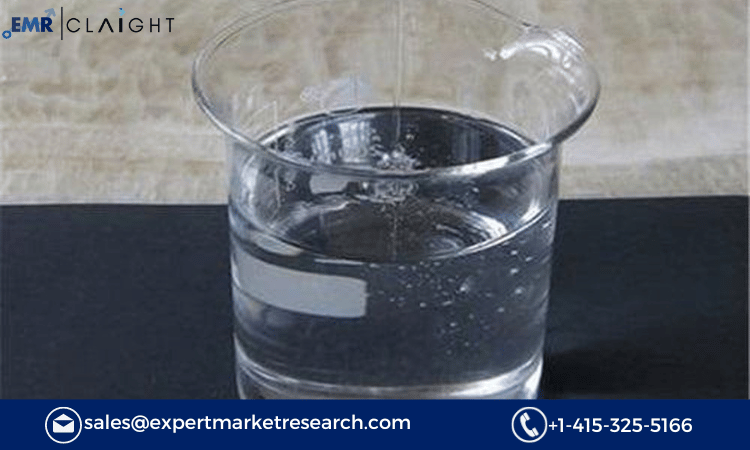
According to the report by Expert Market Research (EMR), the global PDMS market is projected to grow at a CAGR of 8% between 2024 and 2032. Aided by the growing demand in various industrial applications and the increasing prominence of PDMS in the healthcare and electronics sectors, the market is expected to grow significantly by 2032.
Polydimethylsiloxane, commonly known as PDMS, is a silicon-based organic polymer known for its unique properties, including thermal stability, low toxicity, and versatility in various formulations. These characteristics make PDMS a valuable material in industries ranging from electronics to healthcare.
The booming global electronics industry, driven by the increasing demand for consumer electronics and advancements in technology, has significantly contributed to the PDMS market growth. PDMS is widely used in electronics for encapsulation and insulation due to its excellent dielectric properties and resistance to environmental factors.
Get a Free Sample Report with Table of Contents: https://www.expertmarketresearch.com/reports/pdms-market/requestsample
In the healthcare sector, the biocompatibility and flexibility of PDMS have led to its extensive use in medical devices and implants. The ongoing advancements in medical technology and the rising demand for minimally invasive surgical procedures are further propelling the PDMS market.
Another substantial driver that further adds value to the PDMS market size is its application in the automotive industry. PDMS is used in automotive parts and systems due to its durability and resistance to extreme temperatures. As the automotive industry continues to evolve with the rise of electric vehicles and autonomous driving technologies, the demand for high-performance materials like PDMS is expected to increase.
As per the PDMS market analysis, the growing applications in personal care products, due to its non-toxic and non-irritant properties, have also given a significant thrust to the market. PDMS is used in a variety of personal care products, including shampoos, conditioners, and skincare products, due to its ability to form a protective barrier on the skin and hair.
Going forward, while the market is poised for robust growth, it is imperative for players to acknowledge and address environmental concerns proactively. By focusing on sustainable production methods and the development of eco-friendly PDMS alternatives, brands can cater to conscious consumers, ensuring longevity and relevance in the market.
Read Full Report with Table of Contents: https://www.expertmarketresearch.com/reports/pdms-market
Market Segmentation
The market can be divided based on type, application, and region.
Market Breakup by Type
- Low Molecular Weight PDMS
- High Molecular Weight PDMS
- Ultra-High Molecular Weight PDMS
Market Breakup by Application
- Electronics
- Healthcare
- Automotive
- Personal Care
- Construction
- Others
Market Breakup by Region
- North America
- Europe
- Asia Pacific
- Latin America
- Middle East and Africa
Competitive Landscape
The EMR report looks into the market shares, plant turnarounds, capacities, investments, and mergers and acquisitions, among other major developments, of the leading companies operating in the global PDMS market. Some of the major players explored in the report by Expert Market Research are as follows:
- Dow Inc.
- Wacker Chemie AG
- Shin-Etsu Chemical Co., Ltd.
- Momentive Performance Materials Inc.
- KCC Corporation
- Elkem ASA
- Bluestar Silicones International (Elkem Group)
- Nusil Technology LLC (Avantor)
- Evonik Industries AG
- Others
Key Market Drivers
The key drivers of the PDMS market include the following:
- Increasing Demand in Electronics:
- The use of PDMS in the electronics industry for encapsulation and insulation purposes due to its excellent dielectric properties and environmental resistance.
- Growth in the Healthcare Sector:
- The biocompatibility and flexibility of PDMS make it suitable for medical devices and implants, driving its demand in the healthcare industry.
- Advancements in the Automotive Industry:
- The application of PDMS in automotive parts and systems, coupled with the rise of electric vehicles and autonomous driving technologies, is fueling market growth.
- Rising Applications in Personal Care Products:
- The non-toxic and non-irritant properties of PDMS have led to its widespread use in personal care products, contributing to market expansion.
- Industrial Applications:
- The versatile properties of PDMS make it valuable in various industrial applications, including construction and manufacturing, further boosting market demand.
Key Market Challenges
The PDMS market faces several challenges that could impact its growth, including:
- Environmental Concerns:
- The production and disposal of PDMS can have environmental implications, necessitating the development of sustainable alternatives and production methods.
- Regulatory Hurdles:
- Stringent regulations regarding the use of certain chemicals in various industries could pose challenges for the PDMS market.
- Fluctuations in Raw Material Prices:
- The volatility in the prices of raw materials used in the production of PDMS can affect the overall market dynamics.
The global PDMS market is poised for significant growth over the forecast period, driven by its increasing applications in electronics, healthcare, automotive, and personal care products. The market’s expansion is further supported by ongoing technological advancements and the rising demand for high-performance materials across various industries.
To ensure sustained growth, industry players must focus on addressing environmental concerns and adhering to regulatory standards. By investing in research and development to create eco-friendly alternatives and sustainable production methods, companies can cater to the growing demand for PDMS while maintaining their market relevance.
Overall, the PDMS market offers numerous opportunities for growth, driven by its versatile properties and wide range of applications. As industries continue to evolve and innovate, the demand for PDMS is expected to rise, solidifying its position as a key material in various sectors.